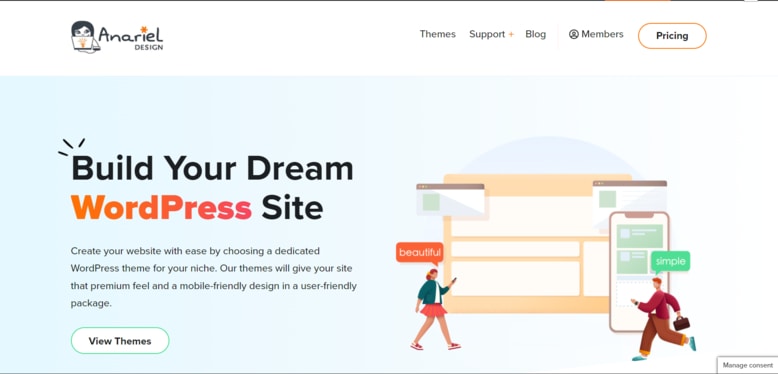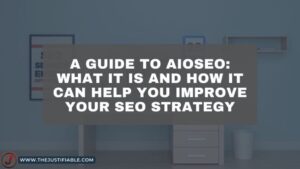Table of Contents
What are the most effective strategies for SEO purposes? How can you optimize your website to rank higher in search results? This article will explore various scenarios that are best for SEO purposes, helping you understand the nuances of each approach.
1. Optimizing Content Structure for SEO Purposes
Optimizing your content structure is vital for maximizing the effectiveness of your SEO efforts. When your content is well-organized and user-friendly, search engines can better understand and rank your pages.
This process involves carefully crafting titles, using header tags effectively, and ensuring your content is easily readable. Each of these elements contributes to a stronger SEO presence, ultimately helping you reach a wider audience.
An optimized content structure doesn’t just cater to search engines but also improves user experience. Visitors are more likely to engage with content that’s easy to navigate and digest, increasing the time they spend on your site and reducing bounce rates.
In this section, we’ll explore specific strategies to enhance your content structure for SEO purposes, focusing on keyword-rich titles, effective use of header tags, and readability improvements.
SEO Services Recommendations
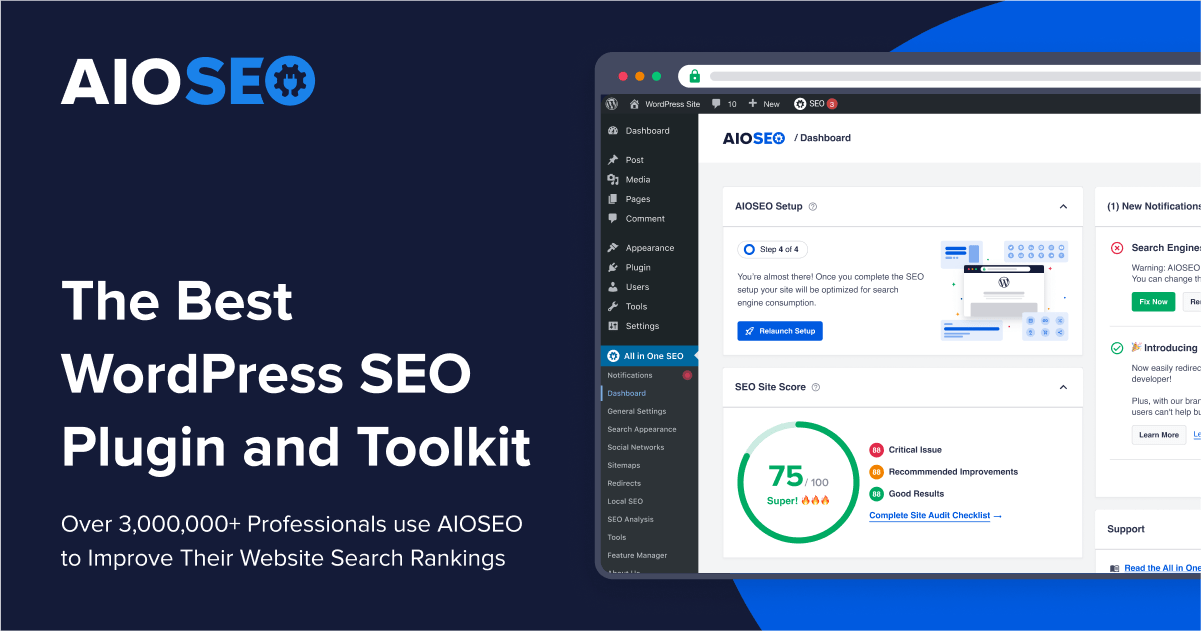 AIOSEO
| 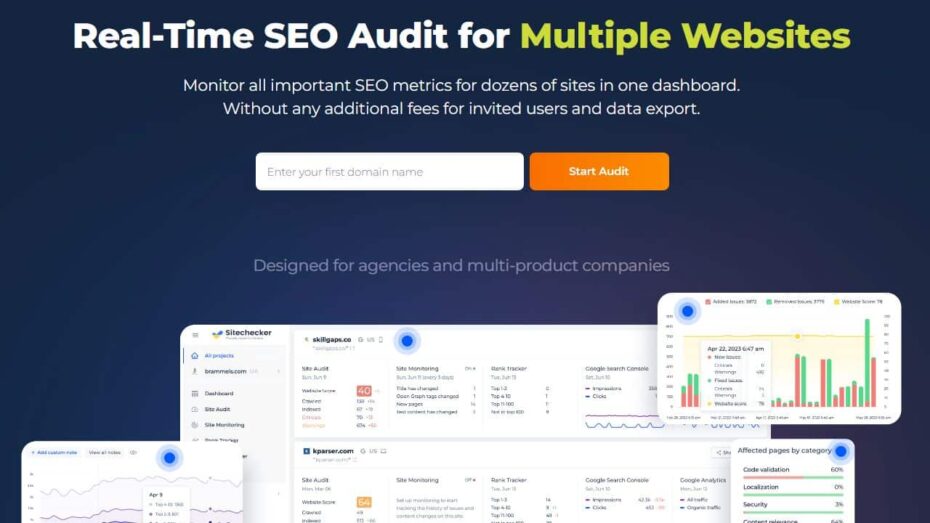 Sitechecker
| 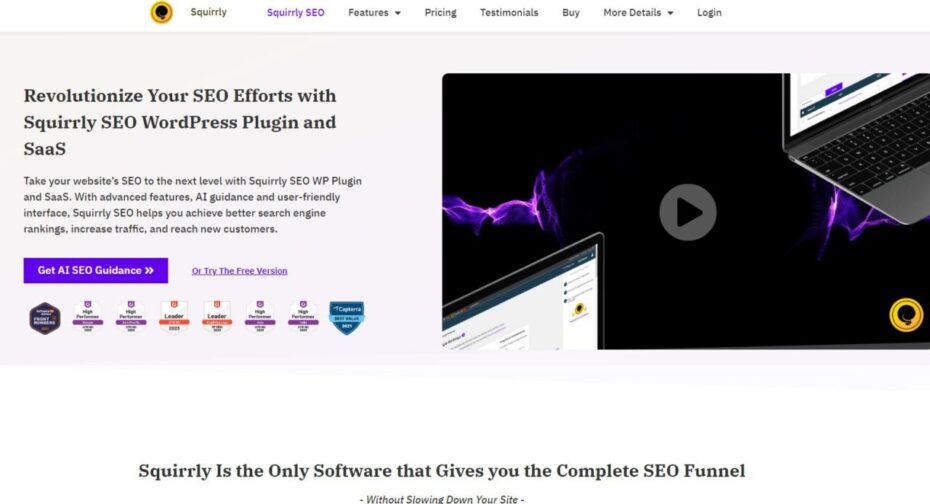 Squirrly
|
Crafting Keyword-Rich Titles and Meta Descriptions
Creating compelling and keyword-rich titles and meta descriptions is one of the most crucial aspects of on-page SEO. Your title should immediately capture attention while clearly reflecting the content’s focus. A strong title not only entices users to click but also signals to search engines what your page is about, helping it rank higher for relevant queries.
Your meta description should complement your title by providing a concise summary of the content, including the primary keyword naturally. This snippet is often the first interaction a potential visitor has with your site in search results, so it needs to be persuasive and informative. Avoid the temptation to stuff keywords; instead, focus on delivering a clear, engaging message that encourages clicks.
Effective titles and meta descriptions also set the tone for the rest of your content. They guide readers on what to expect, ensuring that your content aligns with their search intent. By thoughtfully integrating your primary keyword into these elements, you enhance your chances of ranking higher while also improving the overall user experience.
Utilizing Header Tags Effectively
Header tags (H1, H2, H3, etc.) play a critical role in organizing your content, making it easier for both search engines and users to navigate. The H1 tag should be used for your main title, encapsulating the primary focus of the page. Subheadings (H2, H3, and beyond) break down the content into manageable sections, allowing readers to quickly find the information they need.
Using header tags effectively involves more than just formatting. It’s about creating a logical flow that guides readers through your content. Each heading should provide a clear indication of what the following section will cover, ensuring that the content is easy to scan. This not only improves readability but also helps search engines understand the hierarchy and relevance of your content.
Incorporating keywords into your headers, when done naturally, can further boost your SEO. However, the primary goal should always be clarity and usefulness for the reader. By structuring your content with well-placed headers, you enhance the overall readability and accessibility of your page, which is crucial for both SEO and user engagement.
Enhancing Readability with Short Paragraphs
Readability is a key factor in keeping visitors engaged with your content. Short, concise paragraphs help to break up text, making it easier for readers to follow along and absorb information. This approach is particularly important for online content, where attention spans are often limited, and long blocks of text can be overwhelming.
Each paragraph should focus on a single idea, allowing readers to quickly grasp the point you’re making. Transition words and phrases can help guide them through your content smoothly, maintaining a natural flow. Additionally, varying sentence length and structure keeps the content dynamic and engaging, preventing it from becoming monotonous.
For SEO purposes, enhancing readability can also lead to longer time on page and lower bounce rates, both of which are positive signals to search engines. When your content is easy to read and understand, users are more likely to stay and explore other parts of your site. This, in turn, can lead to higher rankings and more traffic.
Furthermore, readability directly impacts user satisfaction. When visitors can easily navigate and comprehend your content, they’re more likely to return and recommend your site to others. In a competitive online environment, delivering content that is both informative and accessible can set you apart and contribute to sustained SEO success.
2. Implementing Technical SEO for Optimal Performance
To achieve superior SEO results, implementing technical SEO strategies is crucial. Technical SEO focuses on optimizing the backend aspects of your website, ensuring it runs efficiently and meets search engine requirements. This not only enhances your site’s performance but also improves its visibility in search results. In this section, we’ll delve into key technical SEO strategies, including boosting site speed, ensuring mobile-friendliness, and optimizing URL structure.
By addressing these technical factors, you create a solid foundation for your SEO efforts. A well-optimized website attracts more organic traffic, provides a seamless user experience, and signals to search engines that your site is reliable and relevant. Let’s explore these strategies in more detail.
Boosting Site Speed for Better SEO Results
Site speed is a critical factor in SEO, as it directly impacts user experience and search engine rankings. A fast-loading website keeps visitors engaged and reduces bounce rates, signaling to search engines that your site is valuable. Improving site speed can be achieved through various methods, such as optimizing images, leveraging browser caching, and minimizing code files like CSS and JavaScript.
Another effective way to boost site speed is through the use of a content delivery network (CDN). A CDN distributes your content across multiple servers worldwide, reducing the distance data needs to travel to reach users. This results in faster load times, particularly for visitors located far from your primary server.
Additionally, it’s important to regularly monitor your site’s performance using tools like Google PageSpeed Insights or GTmetrix. These tools provide insights into areas that need improvement, allowing you to make necessary adjustments promptly. By consistently optimizing your site’s speed, you ensure a smoother user experience and better SEO results.
Lastly, remember that mobile site speed is just as important as desktop speed. With more users accessing websites via mobile devices, ensuring that your site loads quickly on all platforms is essential for maintaining strong SEO performance.
Ensuring Mobile-Friendliness for SEO Purposes
As mobile usage continues to rise, ensuring your website is mobile-friendly has become indispensable for SEO purposes. A mobile-friendly site adapts seamlessly to different screen sizes, offering an optimal user experience regardless of the device. Google also prioritizes mobile-first indexing, meaning the mobile version of your site is considered first when determining rankings.
To make your website mobile-friendly, start by implementing a responsive design. This approach allows your site to automatically adjust its layout and content based on the device being used. Responsive design not only enhances user experience but also simplifies site management, as you maintain a single version of your site that works across all devices.
Additionally, focus on optimizing images and media for mobile devices. Large images can slow down load times, so using appropriately sized images and compressing them can significantly improve performance. Consider lazy loading techniques to defer the loading of non-essential images until they are needed.
Navigation is another critical aspect of mobile-friendliness. Simplify your site’s navigation to ensure users can easily find what they’re looking for, even on smaller screens. Clear menus, touch-friendly buttons, and accessible content are key components of a mobile-friendly design.
Finally, test your site’s mobile-friendliness using tools like Google’s Mobile-Friendly Test. This tool provides insights into potential issues and helps you make necessary adjustments. A mobile-friendly website not only enhances user experience but also strengthens your SEO performance, leading to higher search rankings and increased traffic.
Optimizing URL Structure for Search Engines
A well-structured URL is a small but significant part of your overall SEO strategy. Optimizing your URL structure helps search engines understand the content of your pages, improving your chances of ranking higher in search results. A clear, concise URL also provides users with a better understanding of what to expect on a particular page.
Start by creating URLs that are easy to read and include relevant keywords naturally. Avoid using long, complex URLs with unnecessary parameters or numbers. Instead, aim for simplicity and clarity, which helps both search engines and users navigate your site more effectively.
Using hyphens to separate words in your URLs is another best practice. This makes the URL more readable and understandable for both humans and search engines. For example, a URL like “example.com/seo-tips” is much clearer than “example.com/seotips” or “example.com/seo_tips.”
Consistency is key when optimizing URL structure. Establish a standardized format for your URLs across your entire site, which could involve keeping them all lowercase and avoiding special characters. A consistent URL structure improves site navigation and contributes to better SEO performance.
Lastly, avoid changing your URLs frequently. When a URL needs to be changed, make sure to implement 301 redirects from the old URL to the new one to preserve any SEO value that the original URL may have accumulated. Optimizing your URL structure is a subtle yet powerful way to enhance your site’s SEO and improve user experience.
Leveraging Backlink Strategies for SEO Purposes
Backlinks are a powerful component of any successful SEO strategy. They act as endorsements from other websites, signaling to search engines that your content is valuable and trustworthy. When leveraged correctly, backlink strategies can significantly improve your search engine rankings, drive more traffic to your site, and establish your authority in your industry.
However, not all backlinks are created equal. To maximize the benefits of backlinks, it’s crucial to focus on quality rather than quantity. In this section, we’ll explore how to build high-quality backlinks, avoid common pitfalls in link-building, and effectively monitor and analyze your backlink performance to ensure your strategy is on track.
Building High-Quality Backlinks
Building high-quality backlinks is essential for enhancing your SEO purposes. Quality backlinks come from reputable, authoritative websites relevant to your industry. These links carry more weight with search engines, signaling that your content is trustworthy and worthy of higher rankings. The key to acquiring such backlinks lies in creating valuable, shareable content that others naturally want to link to.
One effective method for building high-quality backlinks is through guest posting on reputable blogs and websites within your niche. Guest posting allows you to showcase your expertise, provide valuable insights to a new audience, and earn a backlink in return. When crafting a guest post, ensure that it is well-researched, original, and provides genuine value to the readers of the host site.
Another strategy is to engage in content outreach. This involves reaching out to website owners, bloggers, and influencers within your industry to share your content. The goal is to establish relationships and encourage them to link to your content because it offers something beneficial to their audience. Personalized outreach with a focus on the mutual benefits can lead to valuable backlinks.
Additionally, consider creating and promoting original research, infographics, or comprehensive guides that are more likely to be referenced by others. High-quality, data-driven content often attracts backlinks naturally, as others in your industry cite your work to support their own content. By consistently producing valuable content, you can steadily build a strong backlink profile that enhances your SEO efforts.
Avoiding Common Link-Building Pitfalls
While building backlinks is important, it’s equally crucial to avoid common pitfalls that can harm your SEO. One of the most significant mistakes is pursuing low-quality or spammy backlinks. Links from irrelevant, low-authority websites can do more harm than good, potentially leading to penalties from search engines.
Another common pitfall is engaging in link schemes or buying backlinks. While these tactics might offer short-term gains, search engines have become increasingly sophisticated at detecting unnatural link patterns. Participating in such schemes can result in severe penalties, including drops in rankings or even de-indexing from search engines.
Over-optimization of anchor text is another mistake to watch out for. While it’s important to use relevant keywords in your anchor text, overusing exact match keywords can appear manipulative to search engines. Instead, aim for a natural mix of branded, generic, and keyword-rich anchors that fit contextually within the content.
Finally, neglecting to diversify your backlink sources is a common issue. Relying too heavily on a single source for backlinks can make your link profile look unnatural. Instead, aim for a diverse range of backlinks from various sources, such as blogs, news sites, industry directories, and social media platforms. This diversity not only strengthens your backlink profile but also reduces the risk of penalties.
Monitoring and Analyzing Backlink Performance
Monitoring and analyzing your backlink performance is essential for ensuring that your SEO efforts are paying off. Regularly tracking your backlinks helps you understand which links are contributing positively to your SEO and which may be harming it. This ongoing analysis allows you to adjust your strategy as needed and stay ahead of potential issues.
One of the first steps in monitoring backlink performance is using tools like Google Search Console, Serpstat, or SEMrush. These platforms provide insights into your backlink profile, including the number of backlinks, referring domains, and anchor text distribution. They also help you identify any toxic or spammy backlinks that could negatively impact your rankings.
Once you’ve gathered data on your backlinks, focus on analyzing their quality and relevance. High-quality backlinks from authoritative sites in your industry are the most valuable, so prioritize maintaining and acquiring more of these. If you discover low-quality or irrelevant backlinks, consider disavowing them through Google Search Console to prevent them from affecting your site’s performance.
Lastly, track the impact of your backlinks on key SEO metrics, such as organic traffic, search rankings, and domain authority. By correlating changes in these metrics with your backlink activities, you can identify which strategies are most effective and refine your approach accordingly. Continuous monitoring and analysis ensure that your backlink strategy remains aligned with your overall SEO goals, driving long-term success.
4. Enhancing On-Page SEO with Targeted Content
Optimizing on-page SEO is an essential step in driving traffic to your website and improving search rankings. Targeted content ensures that you are not only meeting user intent but also addressing key SEO factors that boost your visibility. When you carefully create engaging content and optimize elements like internal links and images, you make your site more accessible to both users and search engines, which can lead to higher rankings and better engagement.
On-page SEO involves making sure that every piece of content on your site is tailored to meet the needs of both your audience and search algorithms. Well-targeted content encourages longer visits and increased interaction, which signals to search engines that your site is relevant and useful. In this section, we will cover three important aspects of enhancing on-page SEO: creating engaging content, leveraging internal links, and optimizing images.
Creating Engaging and Informative Content
Engaging and informative content is at the core of any successful SEO strategy. When your content resonates with readers, they are more likely to stay on your page longer, share it with others, and return in the future. To create this type of content, start with a clear understanding of your target audience. Identify their pain points, interests, and questions, and tailor your content to provide solutions or valuable insights.
Another way to ensure your content is engaging is to use a conversational tone that keeps readers hooked. Break down complex topics into easy-to-understand explanations, and don’t shy away from adding personality or humor where appropriate. Incorporating storytelling elements can also make your content more compelling, helping to create an emotional connection with your audience.
In addition to being engaging, your content must also be informative and thorough. This means going beyond surface-level information to offer detailed insights, data, and actionable advice. When users find your content helpful, they are more likely to trust your site as an authority on the topic, which can lead to increased rankings and a loyal audience.
Using Internal Linking to Improve SEO
Internal linking is a powerful yet often underutilized tool for improving on-page SEO. By connecting various pages on your site, internal links help search engines crawl your content more effectively, distributing link equity and making it easier for users to navigate your site. Moreover, internal linking encourages visitors to explore more of your content, increasing their time spent on your site.
When implementing internal links, focus on relevance. Link to pages that provide additional value to the reader, offering deeper insights or related information. Avoid overloading pages with too many links, as this can overwhelm the reader and dilute the effectiveness of each link. A few well-placed internal links within relevant context will have a stronger impact on both SEO and user experience.
Anchor text is another critical factor in internal linking. Use descriptive and relevant keywords within the anchor text, but make sure it flows naturally within the content. This not only helps with SEO purposes but also gives users a clear idea of what to expect when they click on the link. Proper internal linking improves site architecture and contributes to higher rankings.
Lastly, consider linking to both high-priority and lesser-known pages on your site. Doing so distributes traffic more evenly across your content and ensures that important pages don’t go unnoticed. Over time, a strong internal linking structure will strengthen your overall SEO performance.
Optimizing Images and Alt Text for SEO Purposes
Optimizing images is a key aspect of on-page SEO that is often overlooked. Images not only enhance the visual appeal of your content but also provide opportunities to boost your SEO. To optimize images effectively, start by compressing them to reduce load times without sacrificing quality. Faster-loading pages lead to a better user experience and can improve your rankings in search results.
Another important step is using descriptive filenames for your images. Instead of generic names like “IMG_1234.jpg,” choose filenames that reflect the content of the image and include relevant keywords. This helps search engines better understand what your images represent and how they relate to the surrounding content.
Alt text is equally important for SEO purposes. Alt text describes the content of an image and is used by search engines to understand what the image is about. Including relevant keywords in your alt text can improve your SEO, but it’s essential to ensure that the description remains natural and accurate. Alt text also enhances accessibility, as it provides descriptions for visually impaired users who rely on screen readers.
Lastly, consider using structured data to mark up your images where applicable. Structured data helps search engines display rich results, such as image carousels or snippets, which can increase click-through rates and improve your visibility in search results.
Adapting to Algorithm Changes for Long-Term SEO Success
SEO is not static; search engine algorithms are constantly evolving, which means your strategy needs to be adaptable. Staying ahead of algorithm changes ensures that your site remains competitive and continues to perform well in search rankings. Flexibility, vigilance, and a willingness to adjust your tactics are crucial for long-term SEO success.
Algorithm updates can impact everything from how content is ranked to how search engines interpret links. By keeping your finger on the pulse of these changes, you can anticipate shifts and adjust your strategy before your rankings are negatively affected. Let’s explore some strategies for adapting to algorithm changes effectively.
Staying Updated with SEO Best Practices
Staying updated with the latest SEO best practices is essential for long-term success. As search engines introduce new technologies and refine their algorithms, the techniques that once worked may no longer be effective. Follow trusted SEO blogs, attend webinars, and participate in industry forums to stay informed about the latest trends and updates.
One effective way to stay current is to focus on building a strong foundation based on principles that withstand algorithm changes. For example, prioritizing high-quality content, optimizing for user experience, and building natural backlinks are strategies that have consistently delivered results, even as search algorithms evolve.
It’s also important to regularly audit your site’s performance. Use tools like Google Analytics and Search Console to monitor changes in traffic, rankings, and site health. Regular audits help you identify issues early and adapt your SEO efforts before they significantly impact your results.
Responding Quickly to Search Engine Updates
When a significant search engine update occurs, it’s important to respond quickly. Start by analyzing the impact of the update on your site’s performance. Look for changes in rankings, traffic, and user behavior, and assess which pages were affected the most. Quick action can mitigate any potential damage caused by an update and help you recover faster.
To stay ahead of the curve, you should be proactive rather than reactive. Anticipate potential changes by focusing on the core aspects of SEO that search engines value, such as user experience, content quality, and relevance. This will help protect your site from severe impacts when updates are rolled out.
Additionally, when responding to updates, don’t rush to make drastic changes. Take the time to understand the nature of the update and adjust your strategy accordingly. Small, well-considered changes based on solid data will be more effective than knee-jerk reactions.
Maintaining a Flexible SEO Strategy
Flexibility is key to maintaining long-term SEO success. A rigid strategy can leave your site vulnerable when algorithm updates or industry trends shift. Instead, adopt a flexible approach that allows you to experiment, test new tactics, and adapt to changes without compromising your overall goals.
One way to ensure flexibility is to diversify your SEO efforts. Don’t rely solely on one tactic, such as keyword optimization or backlinks, to drive your rankings. Incorporate a mix of strategies, such as content creation, technical SEO, and user experience enhancements, so that if one area is affected by an update, the others can help maintain your site’s performance.
Moreover, maintaining a flexible mindset means being open to innovation. Stay on the lookout for emerging trends, such as voice search or artificial intelligence, and consider how they can be integrated into your SEO strategy. By staying agile and open to new ideas, you’ll be better equipped to navigate the ever-changing SEO landscape.
Lastly, always be prepared to review and refine your strategy. SEO is an ongoing process, and continuous improvement is essential for long-term success. By keeping your strategy flexible and adaptable, you’ll ensure that your site remains competitive no matter how search engines evolve.
Frequently Asked Questions (FAQ)
What are the best strategies for improving SEO?
To improve your SEO, focus on optimizing both on-page and technical aspects of your website. Start with a well-structured content layout using keyword-rich titles, effective header tags, and concise meta descriptions. Improve site speed, ensure mobile-friendliness, and maintain a clear, consistent URL structure. Building high-quality backlinks and enhancing readability are also crucial.
How can I optimize my website’s content structure for SEO?
Optimizing content structure involves organizing your website in a way that is easy for both users and search engines to navigate. Use clear and descriptive header tags (H1, H2, H3) to break down content into logical sections. Create keyword-rich titles and meta descriptions that accurately reflect your content. Ensure that your content is readable by using short paragraphs, varied sentence lengths, and transition words to maintain flow. These practices improve user experience and help search engines rank your content higher.
Why are keyword-rich titles and meta descriptions important for SEO?
Keyword-rich titles and meta descriptions are critical because they tell both users and search engines what your page is about. A well-crafted title captures attention and reflects the focus of your content, increasing the likelihood of clicks. Meta descriptions provide a summary of your content and should naturally include the primary keyword. Together, these elements enhance click-through rates and improve your rankings in search engine results pages (SERPs).
How does site speed affect SEO, and how can I improve it?
Site speed is a crucial factor in SEO because it directly impacts user experience and search engine rankings. Faster websites reduce bounce rates and increase user engagement, signaling to search engines that your site is valuable. To improve site speed, optimize images, leverage browser caching, and minimize code files like CSS and JavaScript. Using a content delivery network (CDN) can also help by distributing your content across multiple servers to reduce load times for users worldwide.
What is the role of mobile-friendliness in SEO, and how can I ensure my site is mobile-friendly?
Mobile-friendliness is vital for SEO because more users are accessing websites via mobile devices, and Google uses mobile-first indexing. This means the mobile version of your site is prioritized in search rankings. To ensure your site is mobile-friendly, implement a responsive design that adjusts to different screen sizes. Optimize images for mobile, simplify navigation, and use touch-friendly buttons. Regularly test your site with tools like Google’s Mobile-Friendly Test to identify and fix any issues.
How can I build high-quality backlinks for better SEO?
High-quality backlinks are links from reputable websites that point to your content, signaling to search engines that your site is trustworthy and authoritative. To build these backlinks, create valuable and shareable content that others naturally want to link to. Guest posting on industry-related blogs, engaging in content outreach, and producing original research or infographics are effective strategies. Focus on acquiring backlinks from relevant and authoritative sources rather than quantity.
Why is internal linking important for SEO, and how should I do it?
Internal linking is important because it helps search engines crawl your site more effectively and distributes link equity among your pages. It also improves user experience by guiding visitors to related content. When creating internal links, ensure they are relevant and offer additional value to the reader. Use descriptive anchor text that reflects the content of the linked page. A well-thought-out internal linking strategy can improve your site’s architecture and boost your overall SEO performance.
How can I optimize images and alt text for SEO?
Optimizing images and alt text enhances your SEO by improving load times and making your content more accessible to search engines and users with disabilities. Start by compressing images to reduce file sizes without losing quality. Use descriptive filenames that include relevant keywords. Alt text should accurately describe the image and naturally incorporate keywords when appropriate. This not only helps with SEO but also improves accessibility for users relying on screen readers.
What should I do when Google updates its search algorithm?
When Google updates its search algorithm, begin by analyzing how the update has impacted your site’s performance, focusing on changes in rankings, traffic, and user behavior. Avoid making hasty changes; instead, understand the nature of the update and adjust your SEO strategy accordingly. Emphasize high-quality content, user experience, and natural backlinks, as these elements tend to remain valuable despite algorithm changes. Regularly auditing your site will help you stay ahead of future updates.
How can I ensure long-term SEO success?
Long-term SEO success requires a flexible and adaptive strategy. Stay updated with the latest SEO best practices, continuously monitor your site’s performance, and be ready to adjust your tactics as needed. Focus on building a strong foundation with high-quality content, user experience enhancements, and a diverse backlink profile. Being proactive rather than reactive to algorithm changes, and maintaining a mix of SEO strategies, will help ensure your site’s sustained visibility and ranking.



